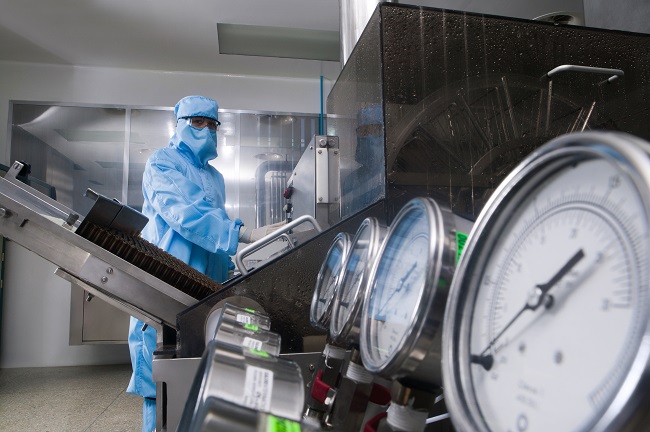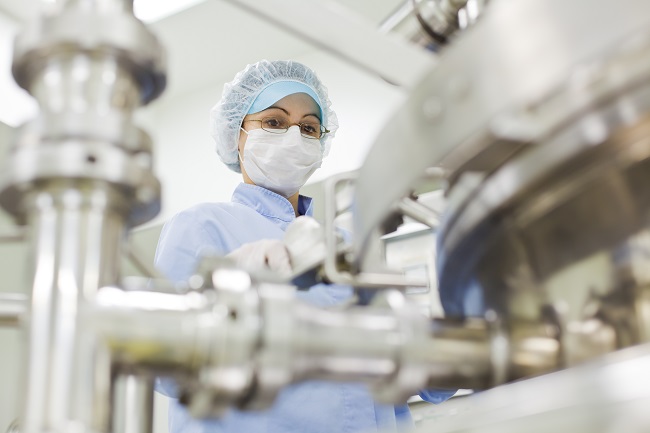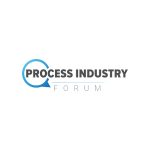Calibration in Pharmaceutical Applications
Regular calibration of instruments is commonplace for process manufacturers. But in the Pharmaceutical industry particularly, where instrument accuracy is critical to product quality and safety, strict calibration practices are essential to ensure compliance and minimise costs associated with lost batches and potential fines.
Instrument Calibration in Pharmaceutical Applications
Why should calibration be more rigid and frequent in Pharmaceutical applications?
As we know, calibration determines how accurate an instrument or sensor is performing. Despite the fact that the vast majority of instruments today are highly accurate, regulatory bodies still need to know the exact extent of an instrument's inaccuracies, measured against specified tolerance levels. Clearly this is of paramount importance to the exacting nature of applications in the Pharmaceutical sector.

When the health of thousands of people could be adversely affected, as a direct result of instrument failure or human negligence, the pressure is on to achieve the highest standards of accuracy possible. Little wonder then that pharmaceutical manufacturing is one of the most rigorous and heavily regulated industries in the world.
Calibration in an Regulatory Environment
Pharmaceutical plants cannot function without calibration. However, adhering to the stringent EMEA/FDA regulations and ISO standards, not to mention the vast quantity of instruments requiring regular calibration, can be a time-consuming and costly process. Large amounts of calibration data is produced and archived, which must be easily accessible, particularly in the event of an audit.
Calibration Management Software
Calibration management software can make locating records, and verifying that systems work, a more streamlined and automated process entirely. Not only does plant efficiency improve as a result but unforeseen instrument failures can also be minimised, thus reducing the likelihood of expensive periods of downtime.
Instrument Traceability
Traceability is also an important factor in calibrations. Particular instruments need to be measured against the relevant corresponding national standard. The appropriate monitoring and measurements, and required measuring devices, are determined by the organisation themselves to evidence a product’s conformity to standards.
Automated Documentation
It also falls to the organisation to ensure that measurements and monitoring practices are consistent with monitoring and measurement requirements. Documentation can sometimes be a neglected afterthought but, by using a documenting calibrator, results can be automatically stored to the calibrator’s memory and then automatically transferred to a database. No more manual inputing leads to a faster and cheaper process entirely.
Companies can analyse their history trend reports based on the stored calibration records. This helps to inform the optimal calibration interval for a certain instrument. Quality and accuracy also receives a welcome boost thanks to fewer human errors. The end goal of a fully automated and paperless calibration procedure, brought about by integrating calibration software and documenting calibrators, can ultimately save companies precious time and boost their calibration prowess.
What are the Instrument calibration regulations?

In Europe, industry calibration requirements fall under the jurisdiction of the the EMEA (European Medicines Agency), as well as local legislation. Whereas in the US it's a process overseen by the FDA (the US Food and Drug Administration) regulations.
Manufacturers are duty bound, by EMEA and FDA regulations, to keep their calibration records up to date and execute instrument calibration to the exacting standards of written, approved procedures. It's also imperative that every instrument in the plant should have a master history record. As well as this unique ID, all product, process and safety instruments should be physically tagged and colour-coded.
Manufacturers should also set a calibration period and error limits for each instrument. These should tally with national and international standards and must be more accurate than the required accuracy of the equipment being calibrated. Personnel must also be properly trained and competent to carry out calibration work and should be able to provide documented evidence of this. It is also vitally important to implement a documented change management system.
Get the latest process industry news
Interested in receiving even more industry-leading news from Process Industry Forum delivered directly to your inbox? Then sign up to our free newsletter. Bringing you the latest news, trends, innovations and opinion from across the process industry, our exclusive newsletter gives you all the industry insights of the moment in one, easy-to-digest bulletin. Stay ahead of the competition with regular process industry news instalments from PIF.

